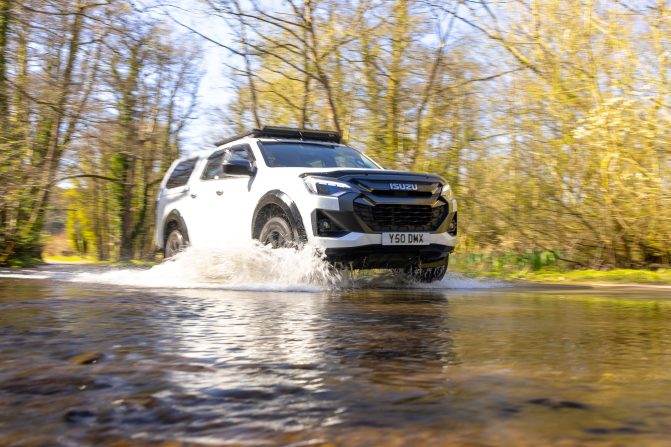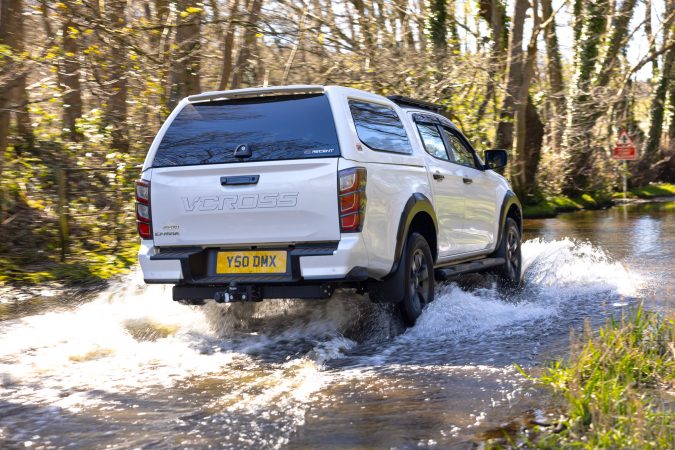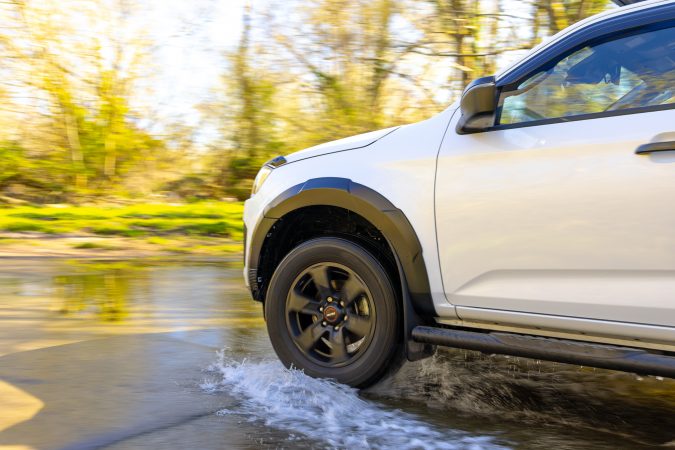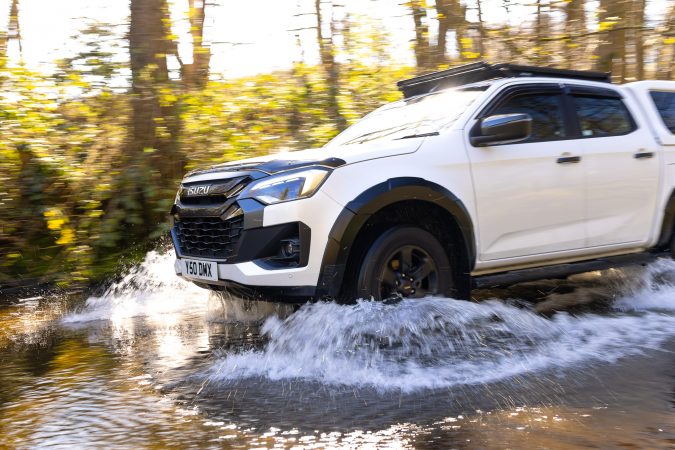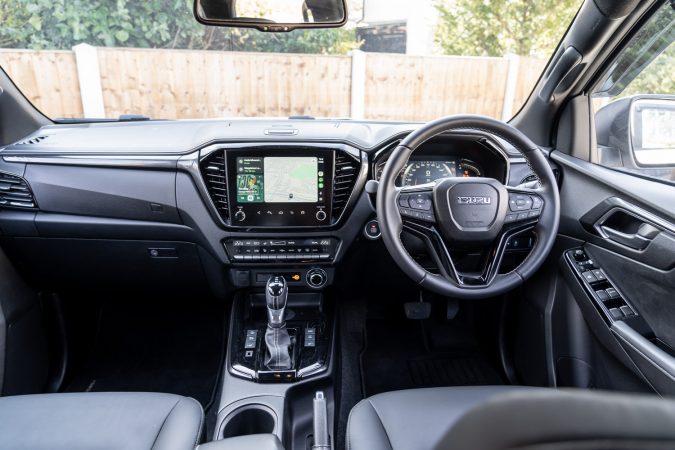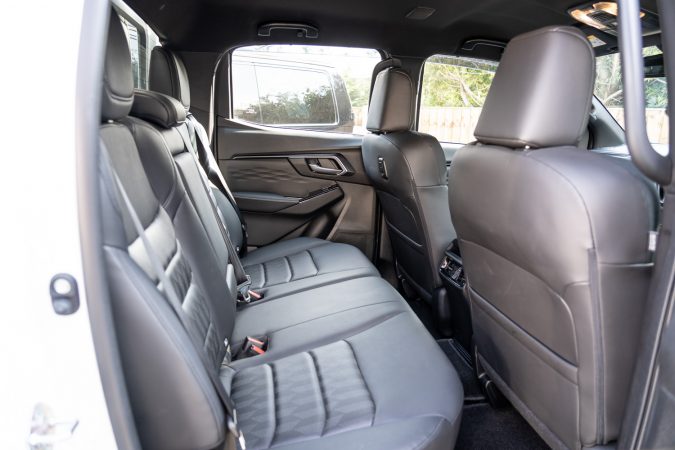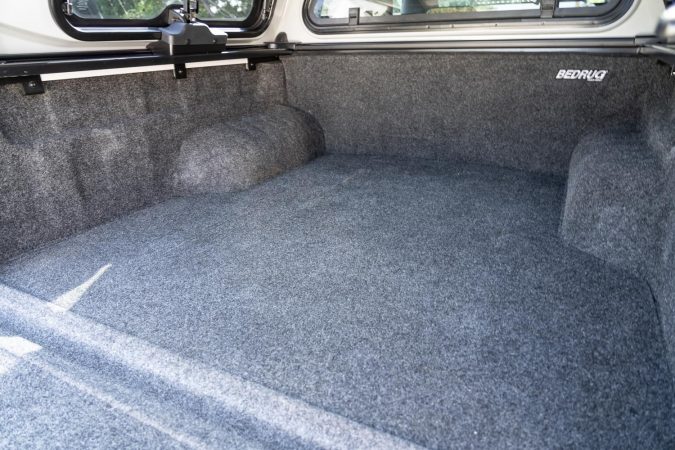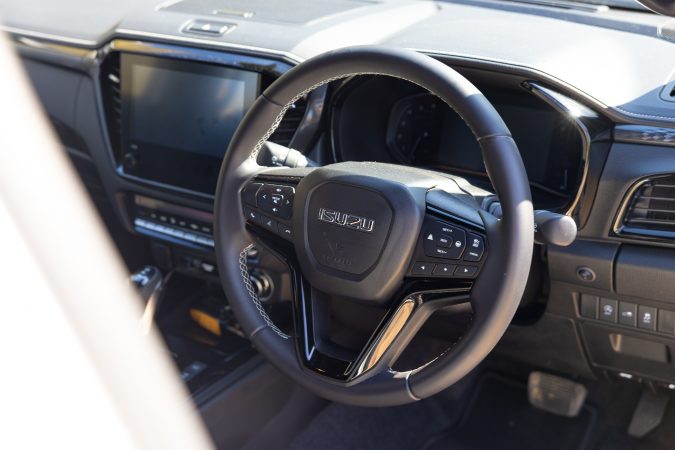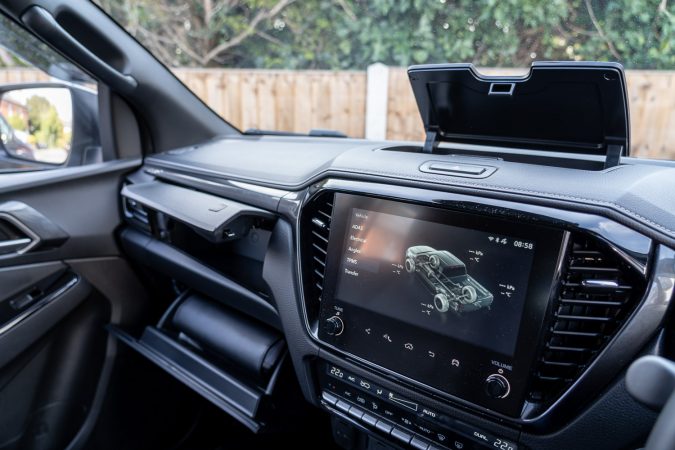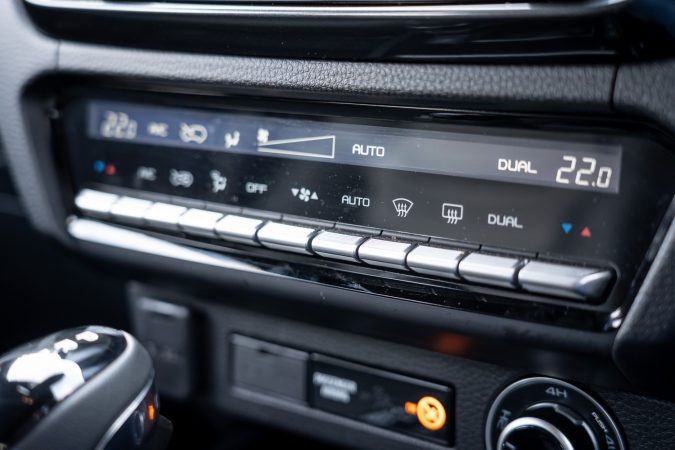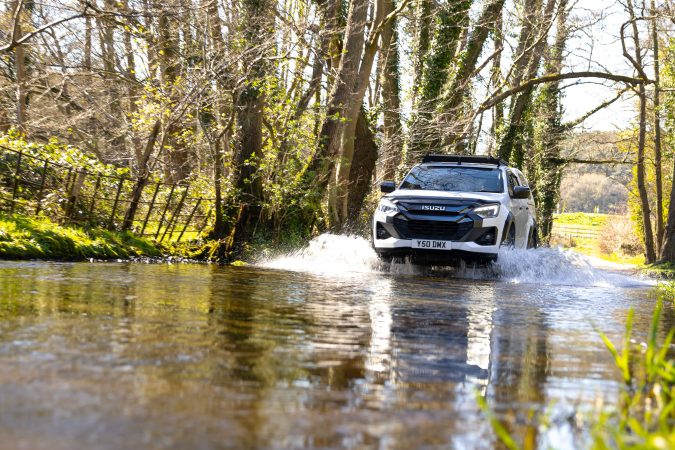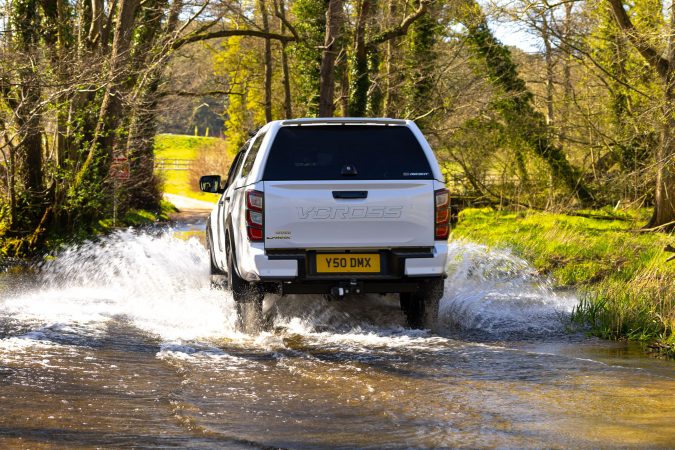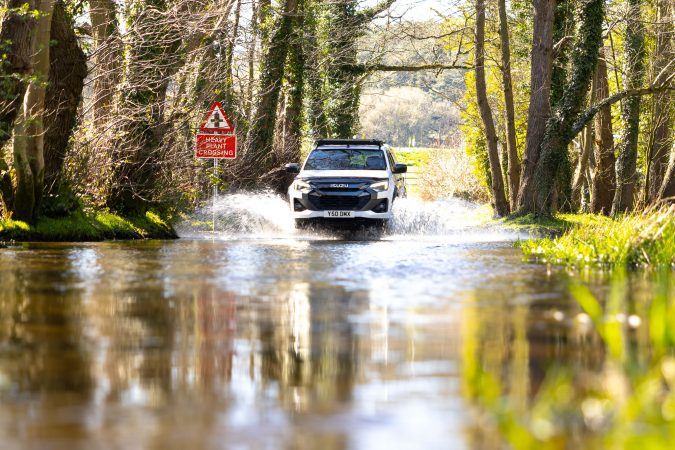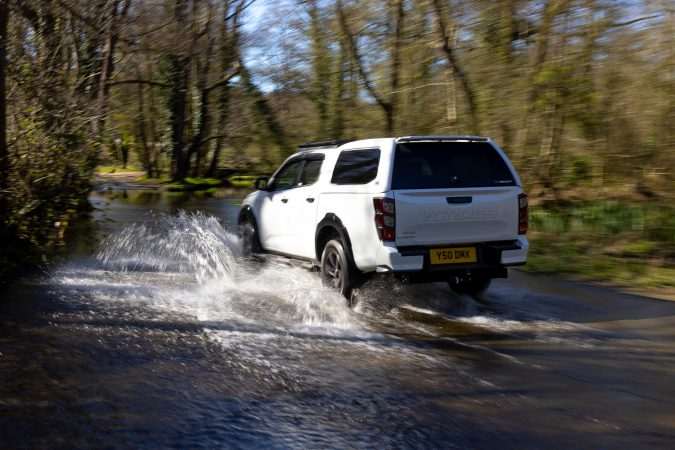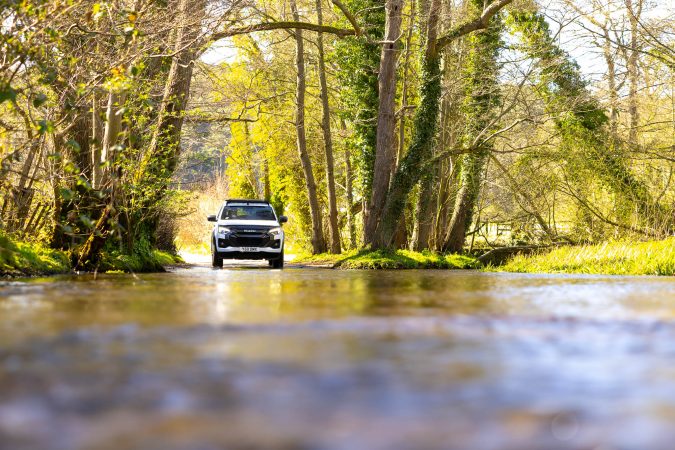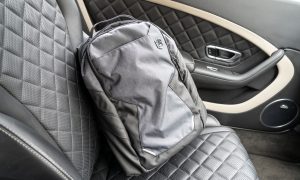Recently, on the way to and from the reopening of Mercedes-Benz of Tamworth, I spent some time in the Isuzu D-Max V-Cross. A far cry from the pragmatic, utilitarian commercial variants of the D-Max that are sold in droves, the V-Cross is an intriguing prospect.
Whereas most pick-ups were bought for commercial purposes, there’s a growing appetite for trucks as personal vehicles, something which the kitted-out V-Cross has clearly been influenced by. In 2024, 41% of D-Maxes were sold for ‘adventure’ (nearly 2,700), and Isuzu reckons 45% of their trucks will be specified in the top V-Cross trim, meaning the company estimates this trim level will be its best-seller.
It Has a Handsome, Hardwearing Exterior
The standard D-Max already has all the tropes of a good-looking pick-up: a handsome, slightly aggressive face, a jacked-up ride, and the impression of off-road ability and durability. Fortunately, the V-Cross retains all of these features while adding a bit of pizzazz to the proceedings.
In standard form, the upgrades are limited. All exterior details are in dark grey, enhancing the mean design, and LED lights all around. The top-of-the-range truck also gets 18-inch ‘Tough Style’ matte dark grey wheels and a V-Cross decal on the tailgate.
However, this particular V-Cross has received a slew of aftermarket parts to give it the proper adventurer’s aesthetic. The most prominent is the roof rack, which will come in handy on long adventures, but it also catches wind at higher speeds, making the truck less stable. There’s also an LED light bar mounted on the roof, activated by an aftermarket switch in the cabin. The result is a magnitude of brilliant white light beaming in front of you. Ideal for late-night drives, nightmarish for stargazers given its luminosity.
At the rear, the V-Cross on test has an enclosed load bay, keeping everything stored at the rear safe and dry, albeit perhaps taking away some of the personality of a truck. There’s also a tow bar, signalling that the V-Cross may still be used by businesses, and all D-Maxes are rated to tow up to 3.5 tonnes.
The only grievance I have with the exterior is that the running boards are too small. Unless your foot is angled correctly upon exit, it will rub against the back of your leg, which could lead to muddy patches if driven off-road.
Overall, the V-Cross treatment makes the D-Max look a tad smarter and less agricultural, but the additional kit is what steals the show.
A Comfy, Capacious Interior to Match
The interior of the D-Max V-Cross is far from spartan and relatively luxurious for a truck. Leather adorns the seats and the steering wheel, and the driver benefits from an 8-way electrically adjustable seat and power lumbar support. The front passenger isn’t too hard done by, though, as both front seats feature heaters.
Everything feels well-built, and most of the common touchpoints are wrapped in leather or made from soft, shiny black plastic. Sure, hard, scratchy plastics can be found, but this is excusable in a pick-up where ruggedness and durability are key. The front chairs are comfortable and covered in soft leather, while rear passengers experience similarly agreeable seating and sitting up so high allows for a good view of the road.
Storage is unlikely to be a problem for Isuzu D-Max owners. There are up to 10 cupholders, thanks to stowage spaces for liquid containers in the rear armrest and the door pockets. Two gloveboxes feature, as do a sunglasses holder, a phone tray with a temperamental wireless charger, and pockets in the front seatbacks. For additional space, the rear seats fold flat, and stowage space under these seats facilitates the storage of bits and bobs away from prying eyes.
Keeping Up With the Times (Just About)
Technology is constantly evolving in the automotive sector, with the next development always just around the corner. However, the current Isuzu D-Max V-Cross has more or less the same digital setup as it did in previous years. The 9-inch touchscreen that featured before has been updated to look sharper and be more responsive, and a new 7-inch digital driver’s display replaces a semi-digital gauge cluster.
The former features wireless Apple CarPlay and Android Auto, as is now standard procedure. The two screens that feature are now essentially obligatory in 2025, but both feel slightly antiquated in comparison to most systems on the market. Other common creature comforts include keyless entry and start, USB-C ports, and dual-zone climate control.
Perhaps not in keeping with the times, there are still plenty of buttons. The volume, air conditioning and plenty of other functions are determined through physical controls, under the touchscreen and on the steering wheel, and the shortcut buttons for the screen are handy, yet often overlooked by manufacturers.
The technology also extends to a suite of driving assists. Front and rear parking sensors and a rear camera, with a passable resolution, should prevent parking skirmishes. Trailer sway control, hill start assist, and hill descent control should also come in handy for activities within the D-Max’s wheelhouse. The rear differential lock and 4WD Shift-On-The-Fly boost traction when the going gets tough, while the new Rough Terrain Mode should handle the most extreme of conditions.
Conversely, the ADAS features implemented are somewhat unrefined and overly grabby. The collision warning and automatic braking are overly sensitive and result in a shrill noise and flashing red light in the cabin despite a large gap to the vehicle ahead. The lane systems can also get a little confused on occasion and can intervene unnecessarily.
Its Agricultural Roots are Evident
Despite the more polished interior and smartened exterior, the V-Cross is still unable to shake off the unrefined nature of the base D-Max, although, depending on which way you look at that, it’s not necessarily a bad thing. All Isuzus come with the 1.9-litre diesel four-pot, which puts out 162bhp and 360Nm of torque. Buyers have the choice of a six-speed manual or a six-speed auto.
Equipped with the latter, as this one is, the D-Max gets to 62mph in a rather pedestrian 13 seconds. However, thanks to the torque from the workhorse engine, it doesn’t feel too sluggish when pulling away, but it does run out of grunt not long after. Due to the nature of the 1.9-litre unit, it does make quite a racket when pushed hard, something that doesn’t subside fully when driven more gently. Greater refinement is likely to come in 2026, when Isuzu will bring the first ‘fully capable’ pick-up to the UK.
The fuel economy of the present model is predictably not the best, with a claimed combined figure of 31.4mpg, although mid-30s can be achieved on longer runs.
The pick-up soaks up bumps quite well thanks to a combination of the modestly-sized 18-inch wheels, thick tyres, and suspension tuned for greater comfort. Even on poorly-kept tarmac, it rode well, almost giving the impression that it was floating just above the surface. However, at higher speeds, the D-Max V-Cross wallowed slightly, getting rid of that illusion. At 12.5 metres, the turning circle is more London bus than black cab, but it’s what you’d expect for a pick-up of this size.
The maximum payload of the V-Cross sits at an impressive 1,105kg for the manual and 1,085kg for the automatic, although more commercially-focused D-Maxes have higher capacities.
Affordable for What It Is
Equipped with the manual gearbox, the Isuzu D-Max V-Cross starts at £37,995 for commercial buyers and £45,516 for private buyers. The six-speed automatic causes the price to jump to £39,995 and £47,916, respectively. Double-cab trucks are also now classed as cars, meaning those with one as a company vehicle now have to pay the same higher BIK rates as car drivers. As standard, a five-year (or up to 125,000 miles) warranty and 5 years of UK and European roadside assistance are included.
The only options are seven paint finishes, including the pearlescent Dolomite White seen on this example, at £720 (£600 for commercial buyers). However, there are plenty of accessories available, which can be fitted by Isuzu. All the gear on this particular D-Max will probably set you back just north of £5k.
Isuzu’s pricing is bang-on, offering more equipment than its rivals at the same price point, making it a compelling buy for those deadset on a pick-up. For private buyers, though, there’s always the option of a large SUV, at which point, due to the pricey nature of pick-ups, the D-Max V-Cross perhaps looks less like a steal. So, paradoxically, the V-Cross is both pricey and reasonable – it just depends on who’s paying.
Final Thoughts on the Isuzu D-Max V-Cross
Put simply, the V-Cross is the D-Max in its best form, although that’s to be expected given it’s the most expensive variant. It’s just as practical and capable, yet is simultaneously also more comfortable and stylish. Quite who the target for the full-fat model is, neither I nor Paul can put a finger on, but the range-topper clearly sells well.
Looking at the Isuzu D-Max range as a whole, the DL40 is remarkably similar in terms of equipment, but the V-Cross is just £1,800 more and offers a bit more kit, so it does make sense to opt for the pricier model. And, for those craving even more off-roading ability and truly menacing looks, there’s always the Arctic Trucks AT35, although it’s much dearer than the V-Cross.
Despite its pitfalls, the V-Cross is an impressive truck, particularly for its price, and deserving of its place at the top of the D-Max lineup. For non-commercial buyers, it’s possibly not the most logical choice of vehicle, but with all the additional gear fitted to this example, the heart may just rule over the head – and that’s not a bad thing.

